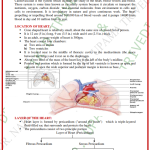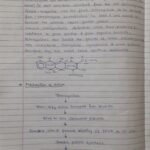TOTAL QUALITY
MANAGEMENT
SUBMITTED TO-DR. FARHAN J AHMED
SUBMITTED BY-ANJALI
M PHARM IST SEM
DEPTT OF PHARMACEUTICS
JAMIA HAMDARD
Introduction
To the better understanding the meaning of
the total quality management we should firstly
understand the meaning of the “Quality”.
“Quality is customer satisfaction” ,“Quality is
Fitness for Use.”
Loss of quality means loss of customer
satisfaction , public health and loss of
organization resource
Definition
Total quality management (TQM) is a modern approach to the management of the
whole organization that emphasizes the role of quality in meeting the needs and
expectations of its customers.
TQM stresses the need for the whole company to manage quality at every stage of
production and interaction with the customer
FOCUS ON
THE
CUSTOMER
INVOLVE CONTINOUS
EMPLOYES IMPROVEMENT
TQM
MEASURE QUALITY
ACCURATELY IMPROVEMENT
WHAT IS QUALITY
ISO 9000:2000 DEFINATION OF QUALITY-
It is the degree to which a set of inherent
characteristics fulfills requirements.
“Fitness for use”
Quality is excellence that is better than
a minimum standard.
“Conformance to requirements”
The ability of your product or service to
satisfy
WHAT IS TOTAL QUALITY MANAGEMENT?
TOTAL-MADE UP OF THE WHOLE
QUALITY-DEGREE OF EXCELLENCE A PRODUCT OR A SERVICE PROVIDES
MANAGEMENT-ACT,MANNER OF HANDLING(or)ART
TQM can also be defined as
1. Total : Every employ of the organization is involved.
2. Quality : Customer requirements are continuously satisfied.
The quality here focuses in 3 perspectives:
Quality of the products and services aligned with customer
specifications
Quality or amount of returns to satisfy the stakeholder needs Quality of
working conditions internal to the organization.
3. Management : Senior management is fully committed toward the
goals of total quality (customer satisfaction, effective employee
participation, doing things right first time, eliminating the wastes and
defects, increasing the efficiency and effectiveness of the work)
TQM ensures that the management adopts a strategic overview of the
quality & focuses on prevention rather than inspection.
Importance of TQM
Quality culture means prevention and elimination of errors, waste,
reworks. So, the concept of TQM has been developed from inspection of
quality control and quality assurence.
TQM is extremely important to business because it keeps a company
competitive and productive.
It not only focuses on quality but also on the continuous improvement of
process capabilities.
TQM framework
It covers all aspects of an
organization and the way it
operates.
Performance is achieved
by planning the
involvement of people in CULTURE COMMUNICATION
improving the processes.
All this can be
implemented by an PLANNING
effective leadership,
communication and
commitment.
PERFORMANCE
EXCELLENCE
PERFORMANCE OF TQM
PEOPLE COMMITMENT PROCESS
TOTAL TEAM
EMPL WORK AND
OYEE QUALITY
COM CHAIN
CUSTOMER
MITM
SATISFATON
ANT
SYSTEMA
TIC
APPROA
CH PROCESS
TQM
THINKING
INTEGRATE
D SYSTEM
TRAINING
CONYINOU
S
EFFECTIE
IMPROVEME
COMMUNICATION
NT
KEY PRINCIPLES OF TQM
There are number of key principles that can be identified and associated
with the definition of the TQM, including:
CONTINOUS
IMPROVEME
NT
QUALITY SATISFY THE
ORIENTED TQM PRINCIPES
CUSTOMER
MANAGEMENT
SATIFY THE
SUPPLIER
Quality oriented management
Vignan Pharmacy College, Vadlamudi.
10
Management should inspire and motivate the
entire workforce
Communication strategy, method and timeliness
must be well defined to be followed by the entire
workforce.
The mission and vision should balance the needs of
the company and customers.
Top management should act as the main driver for
TQM and create an environment that ensures its
success.
Satisfy the customer
Satisfaction is basically physiological state,
Satisfaction is a function of total experience with
organization.
The research gives ten domains of satisfaction
includes:
Quality, value, timeliness, efficiency, ease of access,
environment, inter-departmental team work,
commitment to the customer and innovation.
Satisfy the supplier
External suppliers: A company must look to satisfy
their external suppliers by providing them with clear
instructions and requirements and then paying them
fairly on time.
Internal suppliers: A supervisor must try to keep his
or her workers happy and productive by providing
good task instructions, the tools they need to do their
job and good working conditions. The supervisor must
also reward the workers with praise and good pay.
Continuous improvement
It’s a never-ending improvement.
Continuous improvement, called kaizen by the
Japanese, requires that the company continually
strive to be better through learning and problem
solving.
Now let’s look at two approaches that can help
companies with continuous improvement: the plan–
do–study–act (PDSA) cycle and benchmarking
Continuous improvement
The Plan–Do–Study–Act Cycle The plan–do–study–
act (PDSA) cycle describes the activities a company PLAN
needs to perform in order to incorporate continuous
improvement in its operation.
CONTIOU
S
DO ACT
IMPROVE
MENT
STUDY
Specific steps in the cycle
1. PLAN:
Managers must evaluate the current process and make plans
based on any problems they find
They need to document all current procedures, collect data,
and identify problems.
2. DO (implementing the plan) :
During the implementation process managers should document
all changes made and collect data for evaluation
3. STUDY: The data are evaluated to see whether
the plan is achieving the goals established in the
plan phase.
4. ACT: The best way is to communicate the results
to other members in the company and then
implement the new procedure if it has been
successful. Note that this is a cycle; the next step is
to plan again, we need to continue evaluating the
process, planning, and repeating the cycle again
Stone work of TQM
will focus on explaining the main steps (stages) that help in paving the way for the
organizational transition to TQM…
BUILDING A
QUALITY
EVALUATIN FRAMEWORK
G AND
BUILDING A
CONTROLLI
QPD
NG
TQM
LAUNCHING
THE COMMUNICATING
CHANGES THE QUALITY
STRATEGY
MEASURING AND
ANALAYSING THE
PERFORMNCE
Benefits of TQM
Customer’s confidence.
Improvement of organization’s reputations.
Increase in productivity.
Reduction in product cost.
Increase in profits.
Employ motivation.
Team spirit.
Improvement in attitude.
WHAT DOES TQM
MEAN?
A philosophy that involves everyone in an
organization in a continual effort to improve
quality and achieve customer satisfaction.
WHAT’S THE GOAL OF TQM?
DO THE RIGHT THINGS RIGHT THE FIRST TIME EVERY TIME
TOTAL QUALITY MANAGEMENT..
Total Quality Management (or TQM) is a supervision concept coined by W.
Edwards Deming
“Total quality management is an approach that
seeks to improve quality and performance which
will meet or exceed customer expectations.”
MANAGEMENT PROGRAM
1. Top management commitment and involvement.
2. Customer involvement & designing products for
quality.
3. Designing and controlling production processes.
4. Developing supplier partnerships.
5. Customer service, distribution, installation.
6. Building teams of empowered employees.
7. Benchmarking and continuous improvement
TQM IN PHARMACEUTICAL INDUSTRY
SYSTEMS FOR DEVELOPMANT OF TOTAL QUALITY MANAGEMANT
GMP
BRC
HACCP
ISO
TQM is the integration of all functions and
processes within an organization in order
to achieve continuous improvement of
the quality of goods and services. The
goal is customer satisfaction.
OBJECTIVES OF TQM
Process improvement
Defect prevention
Measuring system capacity
Developing improvement checklist
Helping teams make better decisions
Developing operational definitions
Observing behavior changes over a period of time.
PRINCIPLES OF TQM
CUSTO
CONTIN MER LEADER
UAL FOCUS SHIP
IMPROV
EMENT
8 QM PROCES
PRINCI APPROACH
PLES
SYSTEM
APPOACH
QUALITY MANAGEMANT
SUM OF ALL ACTIVITIES PERFORMED IN AN ORGANIATION TO PRODUCE AND
MAINTAIN A PRODUCT WITH DESIRED QUALITY LEVEL AGAINT A MINIMUM
COST
QUALITY MANAGEMENT FUNCTIONS-
DESIGN
CONTROL
IMPROVEMENT
ASSURANCE
PRINCIPLES OF TQM
QA IN PHARMA INDUSTRY
(INTER RELATIONSHIP)
GOOD MANUFACTURING PRACTICES
“Good manufacturing practice is that part of quality assurance
which ensures that products are consistently produced and
controlled to the quality standards appropriate to their intended use
and as required by the marketing authorization or product
specification”.
What is good manufacturing practice (GMP) ?………
GMP is a part of quality assurence, which ensure that
product are consistently produced and controlled to
the quality standards.
Every product should be manufactured pure, safe,
effective…
FDAis also having this responsibility and one of the
FDI work and inspect, food , drug manufactured by
the factories and other health care organizations.
These controls & practices established in
government regulations called GMP.
Principles of GMP
Vignan Pharmacy College, Vadlamudi.
21
1. Writing step by step operating procedures and work instructions.
2. Following written procedures and instructions.
3. Properly and accurately documenting our work.
4. Validating our work.
5. Designing & constructing facilities and equipment
6. Maintaining facilities and equipment.
7. Clearly defining, developing and demonstrating
job competence.
8. Protecting our products against contamination.
9. Building the quality in to the product by system
quality controlling components and product related
process. Such as manufacturing, packing, labeling,
testing, distribution, marketing.
10. Conducting planed and periodic audits.
why are GMP’s requirement?
Government requirement.
Ensure quality products.
Reduced rejects and recalls.
Satisfied customers.
Maintain manufacturing consistency.
Company image and reputation
Importance of GMP
In the United States the Center for Drug Evaluation
and Research (CDER) promotes and protects public
health by assuring that safe and effective drugs.
There exits different types of risk with medicines..
one of which is a preventable adverse event,
which can be caused by different reasons.
One of the reasons for this event can be a product
quality defect.
This risk can be avoided by effective
implementation of GMP.
why good manufacturing practices (GMPs)
established?…
GMP regulations were originally established over time
after three tragedies. They are as follows:
1. Elixir sulfanilamide disaster.
2. Sulfathiazole calamity. 3. Thalidomide disaster.
DEFINATION
Good manufacturing practice guidelines
provide guidance for manufacturing,
testing, and quality assurance in order to
ensure that a food product is safe for
human consumption
GENERAL GUIDELINES FOR GMP
PLANT MAINTAIANCE WATER
STORAGE WINDOWS
WORK SURFACE LIGHTING
SUPERVISION CLEANING AND SANITATION
WALLS PERSONAL HYGIENE
TRAINING CEILING
DOORS STAFF HYGIENE
AIR QUALITY AND VENTILATION FLOORS
PLANT CONSTRUCTION AND DESIGN
GOOD LABORATORY PRACTICES
GLP IS A SET OF PRINCIPLES THAT AVOIDS A FRAMEWORK WITHIN WHICH A LAB
STUDIES ARE PLANNED, PERFORMED, MONITORED, RECORDED, REPORTED AND
ACHIEVED.
“A QUALITY SYSTEM CONCERNED WITH THE ORGANISATIONAL PROCESS AND THE
CONDITIONS UNDER WHICH NON CLINICAL HEALTH AND ENVIRONMENTAL SAFETY
STUDIES ARE PLANNED, PERFORMED, MONITORED, RECORDED, ACHIEVED AND
REPORTED.”
GLP FOLLOWLED IN LABS TO AVOID ACCIDENTS WHILE HANDLING REAGENTS.
GLP HAS FOLLOWED BY EVERY LAB PERSONNEL.
PRACTICES FOLLOWED IN LAB
1. All personnel working In lab must wear uniform/
aprons to perform in the lab practices.
2. Wearing of mask, hats, covers, gloves, shoes, etc.
should be hygienically recommended under GLP.
3. Safety glasses, protective eye glasses are
essential to carry hazardous operations.
4. Ill person should not allow to work.
5. Avoid poor illumination, obnoxious flavors and
noise in lab
6. Provisions of exhaust fans in lab.
SANITARY & HYGIENIC PRACTICES
lighting and ventilation
Location of premises
Floors and walls
Ceilings
Insects
Doors and windows
Potable water supply
equipment design
GOOD HYGIENIC PRACTICES
It refers to the set of practices associated
with the preservation of health and healthy
living.
Include all practices regarding the
conditions and measures necessary to
ensure quality
Areas examined under GHP
1. Primary production
2. Establishment: design and facilities
3. Control of operation
4. Establishment: maintenance and sanitation
5. Establishment: personal hygiene
6. Transportation
7. Product information and consumer awareness
8. Training
Good Manufacturing Practices are the basis of the production
and preparation of safe food
Good Hygienic Practices deal with safety and suitability
requirements to be followed world-wide
Each food operation should adapt existing codes to their
specific set of conditions
Food operations should also decide which practices are
critical for the safety of a product and thus have to be included
in the HACCP plan.




